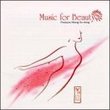| All Artists: Julius Rontgen, David Porcelijn, Rheinland-Pfalz Staatsphilharmonie Title: Julius Röntgen: Symphony No. 3; Suite "Aus Jotunheim" Members Wishing: 0 Total Copies: 0 Label: Cpo Records Original Release Date: 1/1/2007 Re-Release Date: 3/27/2007 Genre: Classical Styles: Historical Periods, Modern, 20th, & 21st Century, Symphonies Number of Discs: 1 SwapaCD Credits: 1 UPC: 761203711925 |
Search - Julius Rontgen, David Porcelijn, Rheinland-Pfalz Staatsphilharmonie :: Julius Röntgen: Symphony No. 3; Suite "Aus Jotunheim"
 | Julius Rontgen, David Porcelijn, Rheinland-Pfalz Staatsphilharmonie Julius Röntgen: Symphony No. 3; Suite "Aus Jotunheim" Genre: Classical |
Larger Image |
CD DetailsSimilar CDs
|
CD ReviewsThe Beginning of a Series of Recordings of Röntgen's Orchest J Scott Morrison | Middlebury VT, USA | 04/27/2007 (5 out of 5 stars) ""Röntgen's compositions, published and unpublished, cover the whole range of music in every art form; they all show consummate mastery in every aspect of technique. Even in the most facile there is beauty and wit. Each series of works culminates in something that has the uniqueness of a living masterpiece." -- Sir Donald Francis Tovey It is a mystery to me why the music of Julius Röntgen (1855-1932) isn't better known and more frequently played. In a lifetime of concert-going I've never heard a single work of his played live. Thank goodness then that the cpo record label is bringing out what appears to be the beginning of a series of recordings of his symphonic music. Röntgen, born in Germany -- his father was concertmaster of the Leipzig Gewandhaus Orchestra -- but long-resident in Holland, wrote perhaps twenty symphonies and a raft of other orchestral music. On the basis of the music recorded here I'd guess there will be an audience for it; certainly David Porcelijn and the Staatsphilharmonie Rheinland-Pfalz (based in Ludwigshafen am Rhein) make a convincing case for it. The Third Symphony in C Minor (1910) is admittedly conservative for its time -- but from the distance of 100 years, what difference should that make? -- and has tints of Brahms, Schumann and even Bruckner but is in Röntgen's unique voice. He is a master orchestrator -- I particularly like his use of woodwinds and subtle brass -- and has a knack for instantly memorable melodies. There is also rhythmic inventiveness. The opening Allegro molto e passionato is Beethovenian in its breadth and urgency. The Andante is serene and lyrical but with an Elgarian tread in the lower strings. The Scherzo, marked Presto feroce, has the rhythmic insistence of a Bruckner scherzo but does not, like Bruckner, wear out its welcome or convey false bonhomie; it is indeed 'feroce'. The minor-key finale, marked 'Largamente - Allegro - Largamente' has a lengthy, portentous, even hieratic, opening succeeded by an agitated allegro with swirling strings and winds over a chorale-like main theme and with subdued but urgent brass interjections. The symphony ends with a majestic peroration that conveys a sense of hard-won but thorough triumph. Röntgen and his first wife Amanda were fast friends of Edvard and Nina Grieg and the two couples visited back and forth frequently. Röntgen became fascinated with Norwegian folk music and folk tales. His suite 'Aus Jotúnheim' came out of that fascination. (Jotúnheim, in Norse mythology, was the home of the giants.) Written originally as a violin-piano duo as a present for the Griegs on their twenty-fifth anniversary, it was played for the Griegs by the Röntgens (Amanda was a fine violinist). That same year Röntgen orchestrated the suite. The movements do not have descriptive titles but one hears throughout a Norwegian-ness that does indeed remind one of Grieg's music. The second movement, vivo e energico, has folkdance-like verve. The fourth movement reminds one of the Hardanger fiddle music that infuses much of Grieg's (and Tveitt's) music. The fifth and last movement features a lament for violin (played lusciously here by the orchestra's unnamed Konzertmeister and later echoed by the plangent tones of the English horn) and a quiet, solemn and ineffably beautiful brass chorale. Norway's ethos is present throughout this delightful (and memorable) suite. Recommended for lovers of late Romantic orchestral music looking for new corners of that genre to investigate. Scott Morrison " Passes the Robustness Test Jeff Dunn | Alameda, California United States | 10/07/2008 (5 out of 5 stars) "Do you have trouble finding places to put your CDs? I do, and the reason is that I buy many based on good reviews, enjoy listening to them once or twice, but then file them away where they gather dust because they don't generate that magical hankering to hear them over and over.
Not so this Roentgen symphony! I'm really hooked on the first movement, with it's striking principal theme that I've sung in the shower till I'm hoarse. And the second movement: so mysterious! Roentgen is not original, sounding from time to time like Brahms, Reger, Dvorak, even Tchaikovsky here and there. No matter--nothing is stolen from these gentlemen except style, the music is all new, of the best quality, and written masterfully. Don't you wish they'd discover a new, great symphony of Brahms or Dvorak? No need to hope, just buy this CD. It won't gather dust on your shelves: it's so "robust," that is, continues to provide pleasure hearing after hearing, that you'll wonder why you bought so many of those other one-hearing-wonder CDs. Also recommended if you can find it: Roentgen's 1930 Symphony." |




